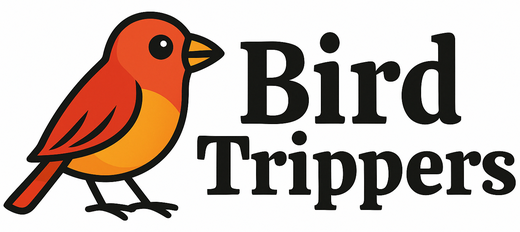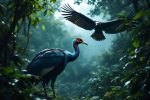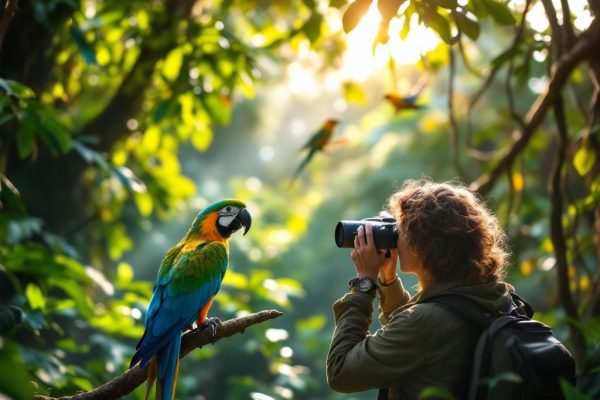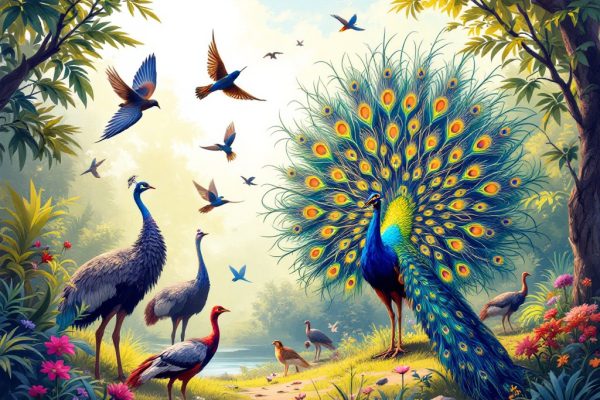Fun Facts About Birds That You Didn’t Know
Did you know the world’s only poisonous bird shares something in common with your hair? From crows holding “funerals” to hummingbirds flying backward, the avian world is full of surprising wonders. Discover fascinating facts about bird behaviors, impressive physical feats like the peregrine falcon’s 200 mph dives, and unique adaptations like the albatross’s ability to sleep mid-flight. Explore the intriguing lives of birds and deepen your appreciation for these remarkable creatures. Dive into the article now!
Important information

- The Pitohui is the only known poisonous bird species.
- Crows hold “funerals” for their dead, possibly to learn about dangers.
- Hummingbirds can fly backward due to their unique figure-8 wing motion.
- The Arctic tern makes the longest migration of any animal, a 44,000-mile round trip.
- Bird feathers are made of keratin, the same material as human hair and nails.
Intriguing Fun Facts About Birds That You Didn’t Know
Dive into the amazing world of birds! Crows exhibit intriguing social behaviors, gathering around deceased companions and emitting calls reminiscent of human mourning rituals. In stark contrast, the Pitohui stands out as the only poisonous bird species. Bird sizes also offer a fascinating study in contrasts. The Ostrich claims the title of largest living bird, while the diminutive Hummingbird holds the record for smallest. Remarkably, bird feathers share a surprising connection with humans: they’re made of keratin, the same substance found in our hair and nails.
Social Behaviors
crows demonstrate fascinating social dynamics, particularly their gatherings around deceased companions, accompanied by calls that resemble human mourning rituals.
Unique Characteristics
the Pitohui holds a unique distinction as the only poisonous bird species.
Size Variations
the Ostrich reigns as the largest living bird, while the tiny Hummingbird holds the record for the smallest.
Surprising Connections
bird feathers share a remarkable link with humans, composed of keratin—the same substance found in our hair and nails.
Impressive Physical Capabilities of Birds
Birds possess remarkable physical abilities. Hummingbirds can hover with incredible precision, their wings beating up to 70 times per second, increasing to about 80 beats per second during courtship displays. This allows them to fly backward. The Peregrine Falcon reaches speeds exceeding 200 mph during hunting dives. Flamingos filter tiny organisms from the water by eating upside down.
The Wing Speed of Hummingbirds
Hummingbirds are known for their incredibly fast wing beats, a unique figure-8 motion that can reach up to 70 times per second. This impressive speed allows them to hover effortlessly, sipping nectar from flowers, their main food source.
The Peregrine Falcon’s Speed
The peregrine falcon, renowned for its remarkable speed, can exceed 389 km/h during its hunting dives. This makes it the fastest creature on Earth. These breathtaking dives, known as “stoops,” enable the falcon to capture its prey mid-flight dramatically.
How Flamingos Eat Upside Down
Flamingos have a unique feeding method, eating with their heads upside down. Their beaks are specially adapted for this, with a smaller upper beak and a larger lower beak. This structure allows them to filter feed by sifting through mud and water. They primarily consume tiny organisms like brine shrimp and algae, making this upside-down method crucial for their survival.
Birds with Unique Behaviors
Crows engage in “crow funerals,” gathering around their dead. Scientists believe this helps them identify dangers.
Many bird species practice “anting,” rubbing ants on their feathers. This utilizes formic acid as a natural insecticide and fungicide.
Hummingbirds are known for their backward flight. They achieve this by rotating their wings 180 degrees, allowing precise hovering.
Owls, lacking teeth, swallow small prey whole. Their gizzard grinds bones and fur, and they regurgitate indigestible remains as pellets.
Pigeons possess exceptional facial recognition. They remember if a person has been kind or hostile.
What Are Crow Funerals?
Crows display a unique behavior pattern where they congregate around their dead, a phenomenon often referred to as “crow funerals.” These gatherings are reminiscent of human mourning rituals, with the birds emitting calls that sound like expressions of respect. The precise reason for these gatherings remains unclear, but some scientists believe they serve as learning experiences. Crows may be evaluating potential dangers or alerting others to threats. The intelligence of these birds continues to fascinate researchers.
How Do Hummingbirds Fly Backward?
Hummingbirds are unique in the avian world due to their ability to fly backward. This remarkable skill is a result of their unique wing structure and motion. Instead of the typical up-and-down flapping, hummingbird wings rotate in a figure-eight pattern. This generates lift in both directions, allowing them to hover precisely near flowers and sip nectar with ease. This adaptation showcases the ingenuity of nature’s design.
Why Do Birds Engage in Anting?
Birds engage in a fascinating behavior known as “anting.” They rub ants on their feathers, utilizing the formic acid secreted by the ants. This natural insecticide effectively eliminates mites and lice. Anting not only contributes to pest control but also helps maintain feather condition and may even soothe irritated skin. This practice plays a crucial role in the birds’ overall health and cleanliness.
How Owls Swallow Food Whole
Owls swallow their prey whole because their beaks are designed for gripping, not tearing. A powerful gizzard, a muscular stomach pouch, grinds bones and fur. The indigestible remnants are then expelled as pellets, keeping the owl’s digestive system clean and efficient.
Pigeons Recognize Human Faces
Pigeons have an amazing knack for recognizing human faces. This ability is essential to their urban survival, helping them differentiate between friend and foe. They might remember someone who offered a kind handful of seeds, just as easily as someone who shooed them away. This facial recognition is a vital adaptation to city living.
Fascinating Adaptations of Birds
The Pitohui distinguishes itself as the world’s only poisonous bird. Its skin and feathers contain batrachotoxin, a neurotoxin that causes numbness and tingling upon contact. This potent defense mechanism protects the Pitohui from predators.
Albatrosses possess the extraordinary ability to sleep mid-flight. This is possible due to unihemispheric slow-wave sleep, a unique adaptation that allows one half of their brain to rest while the other remains alert. This remarkable adaptation enables them to travel vast oceanic distances without landing.
Birds demonstrate surprising intelligence, with some species exhibiting remarkable tool use. For instance, New Caledonian crows skillfully use sticks to extract insects from tree bark.
Egyptian vultures also display impressive ingenuity by using stones to crack open ostrich eggs. Such adaptability highlights the remarkable cognitive abilities of these avian species.
Poisonous Birds: The Pitohui
The Pitohui bird possesses a remarkable defense mechanism: its feathers contain a potent toxin that protects it from predators.
Albatrosses Sleep While Flying
Albatrosses possess the remarkable ability to sleep while in flight, allowing them to traverse vast oceans without landing.
Birds’ Tool Use in Daily Life
- New Caledonian crows skillfully craft tools from twigs and leaves to extract insects from tree bark.
- Egyptian vultures use stones to crack open tough ostrich eggs.
- Woodpecker finches employ cactus spines or twigs to locate grubs hidden within wood crevices.
- Green herons use bait, such as bread crumbs or insects, to lure fish closer.
Amazing Bird Intelligence and Migration
The African grey parrot possesses remarkable intelligence, rivaling the cognitive abilities of a human toddler. The Arctic tern, on the other hand, demonstrates a different kind of brilliance: its mastery of long-distance flight. This small bird travels an astounding 44,000 miles annually, journeying between the Arctic and Antarctic regions. This migration is the longest of any bird species, a true testament to the tern’s remarkable stamina.
The Intelligence of the Grey Parrot
African grey parrots are known for their remarkable intelligence, often compared to that of a young child. Research confirms their ability to solve complex problems and understand colors and numbers. Studies have also shown they can use tools and mimic human speech. These cognitive abilities continue to fascinate scientists.
Arctic Tern’s Long Migration Journey
Arctic terns are renowned for their extraordinary annual migration, a staggering 44,000-mile round trip between the Arctic and Antarctic. Navigating by the sun, stars, and Earth’s magnetic field, these incredible birds hold the record for the longest migration of any animal, a true testament to their endurance.
Additional Fun Facts About Backyard Birds
Dietary Preferences
Backyard birds exhibit a wide range of dietary preferences. For example, American Goldfinches are particularly fond of seeds. House Sparrows consume both seeds and insects. Northern Cardinals enjoy a more varied menu, incorporating seeds, fruits, and insects into their diet.
Nesting Habits
Nesting habits are equally diverse among backyard birds. Robins construct cup-shaped nests from mud and grass. Downy Woodpeckers excavate cavities in trees. House Finches prefer existing crevices or ledges for nesting. Each species demonstrates a unique approach to raising its young.
Feeding Habits of Common Backyard Birds
Backyard birds have varied dietary preferences. Many enjoy seeds, such as sunflower, millet, and nyjer. Others, like woodpeckers, search for insects under tree bark. Berries and fruits are also attractive options. Ground-dwelling birds, such as robins, hunt for worms and insects. Conveniently, backyard feeders supplement these natural food sources with offerings like seeds, suet, nectar, and fruit, providing crucial sustenance.
Nesting Behaviors You Might Not Know
Weaver birds are known for their intricately woven hanging nests, skillfully crafted from grass and twigs.
Bowerbirds construct elaborate decorated structures on the ground, called bowers, to attract mates.
Oxpeckers uniquely nest in the protective crevices of large animals, securing both shelter and a readily available food supply.

















